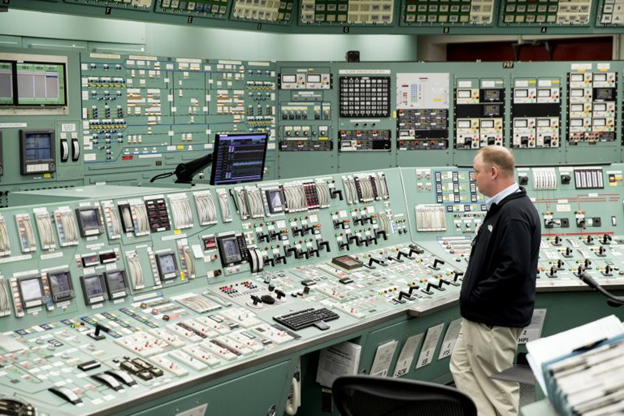Control room .png

Part 2 of 2 Parts (Please read Part 1 first)
Workers must be well trained in the operation and maintenance of nuclear fuel handling systems in a nuclear power plant. Safe handling of nuclear fuel rod assemblies is critical to ensure smooth functioning. However, the configuration of the fuel channels in the reactors is very complex and training the engineers in real environments can be difficult. Through computer simulations, VR provides a safe and highly realistic simulated environment where workers can learn about handling fuel without exposure to radiation or compromising the structural integrity of the reactor.
Preparing for accidents and emergencies that could happen at a commercial nuclear power plant is a critical necessity. Laws in each nuclear-powered country require nuclear operating companies to develop and maintain emergency preparedness plans for their nuclear power plants to protect the public. However, planning and managing such training can consume a considerable amount of time and resources. This is one place where training in a simulated environment is important. Emergency situations such as loss of electricity supply, failure of emergency generators, failure of cooling systems or leaks can be recreated in a virtual environment for training and testing purposes. Virtual environments allow users to test the correct operation of the devices, tools and procedures that would be used in different emergency situations. It also helps to maintain the level of preparedness of the staff that would be involved in these emergencies.
In addition, VR enables testing of the response time and the communication and decision-making skills of the teams in emergency situations that could not be created in real life.
Most of the nuclear industry still uses tradition training methods such as computer-based training, with limited sessions of on-site training. This means that engineers are not always certain about what needs to be done in real life in an actual environment.
VR allows the creation and simulation of virtual worlds. These worlds immerse trainees in the virtual environment as if they were inside an actual nuclear power plant. In a VR environment, trainees can move around the simulated plant in complete safety. VR controllers allow the trainee to interact with virtual control panels, turbines and fuels in the simulated virtual world. This is not possible in real-life training. VR training results in higher reproducibility and safety. It is also cost-effective, since multiple sessions can be conducted at relatively low cost. Studies have indicated that VR-enabled training has improved the overall responsiveness of those working at nuclear power plants.
The best aspect of VR is that it allows real-time collaboration and creates an accurate immersive environment. Assembly, operations, maintenance, and decommissioning of nuclear power plants training through VR can be used at all stages at a fraction of the costs of other options and in complete safety. The nuclear industry can use VR training to increase efficiency and maximize operations. It is a very safe way to train teams and attract young workers to the industry who may be familiar with VR from video games and entertainment.